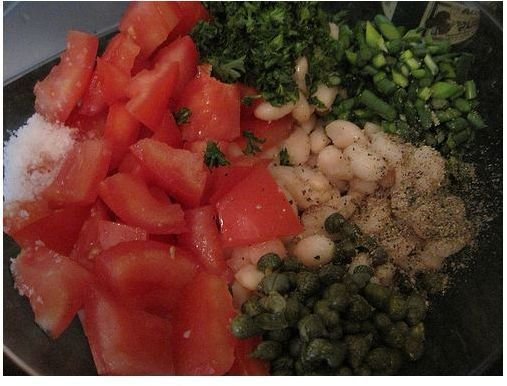What Is the Nutritional Value of Navy Beans?
Navy beans are great. You can eat them all the time as they are packed with nutrition, and are not only cholesterol free, but eating them also helps to lower blood cholesterol levels. They are versatile in dishes and for all the nutritional value of navy beans, they are incredibly inexpensive. In fact, that’s how this legume got its name — it was one of the practical, healthy, and cheap food staples of the U.S. Navy back in the beginning of the twentieth century. So what exactly is in a one cup serving of this food?
Calories
One cup of cooked navy beans has 258 calories. This is not bad considering this food is incredibly filling because of it’s high fiber and high protein content. About half of the calories are from carbohydrates, 15 percent are from protein, and 6 percent are from fat. Enjoy navy beans when trying to lose weight, or if you want an energizing food that will keep your blood sugar levels stabilized.
Fat
How much fat is in a serving of navy beans? Practically none; there is one gram of fat for one cup. The fat is unsaturated and good for you, with both omega-3 and omega-6 fatty acids, which are so important for brain health.
Carbs
There are 14 grams of complex carbohydrates in a cup of cooked navy beans. This is about five percent of the daily recommended amount. This makes navy beans a great energizing food.
Protein
Put these legumes on the list of low-fat protein sources! Navy beans have 6 grams of protein per serving, making them a great food for vegetarians looking for vegetable sources of protein. This nutrient is needed by the body for proper growth, immune health, and the production of hormones, enzymes, and antibodies.
Fiber
One of the reasons that all beans should be a part of a healthy diet is because of fiber content. With 46.6 percent of the daily recommended amount of dietary fiber (10 grams), navy beans are no exception. The fiber in these legumes is soluble fiber. It becomes a gel-like substance in the digestive tract, and in this form helps to remove cholesterol from the body.
Vitamins
How about vitamins? A serving of navy beans supplies over 60 percent of the daily recommended requirement for folic acid. This nutrient is required for the brain, for new red blood cell formation, and for energy production. It is also a very important nutrient for pregnant women — folate helps with fetal nerve cell formation.
Navy beans are also very high in thiamin, with almost 25 percent per serving. This B vitamin plays several important roles, helping with blood circulation, proper digestion, and brain health. This vitamin also helps to protect the body from the physical effects of the aging process.
Minerals
Navy beans are a good source of manganese, phosphorus, copper, magnesium, and iron. There is half of your daily supply of manganese in

one cup of cooked beans. This mineral is important for reproductive health, nerve health, blood sugar regulation, and energy production. There is 28 percent of the daily requirement of phosphorus, which is necessary for proper heart function, cell growth, and bone and teeth formation. With 27 percent of the daily supply of copper, navy beans help with red blood cell formation, energy production, and the healing process.
Magnesium is essential for preventing the calcification of body tissue and it is also involved with enzyme activity. There is 26 percent of the daily requirement of this mineral in one serving of navy beans. These legumes are a great source of iron as well, with 25 percent of what you require in a day for healthy growth and oxygenated blood.
The nutritional value of navy beans is reason enough to include this food in your diet on a regular basis. You can buy dried beans in bulk for next to nothing and use in healthy dishes for weeks. Eat navy beans with rice and vegetables once a week instead of meat to save money, lower cholesterol, and get a rich dose of protein, fiber, vitamins, and minerals.
References
Balch, Phyllis A. " Prescription for Nutritional Healing." Fourth Edition (Penguin Books, 2006).
Fruits and Veggies More Matters https://www.fruitsandveggiesmorematters.org/?page\_id=832
World’s Healthiest Foods https://whfoods.org/genpage.php?tname=foodspice&dbid=88
photo by: Michigan Mom (CC/flickr) https://www.flickr.com/photos/magro-family/3674218202/sizes/m/in/photostream/
photo by Ab9kt (CC/flickr) https://www.flickr.com/photos/ab9kt\_scott/4180070189/sizes/m/in/photostream/
